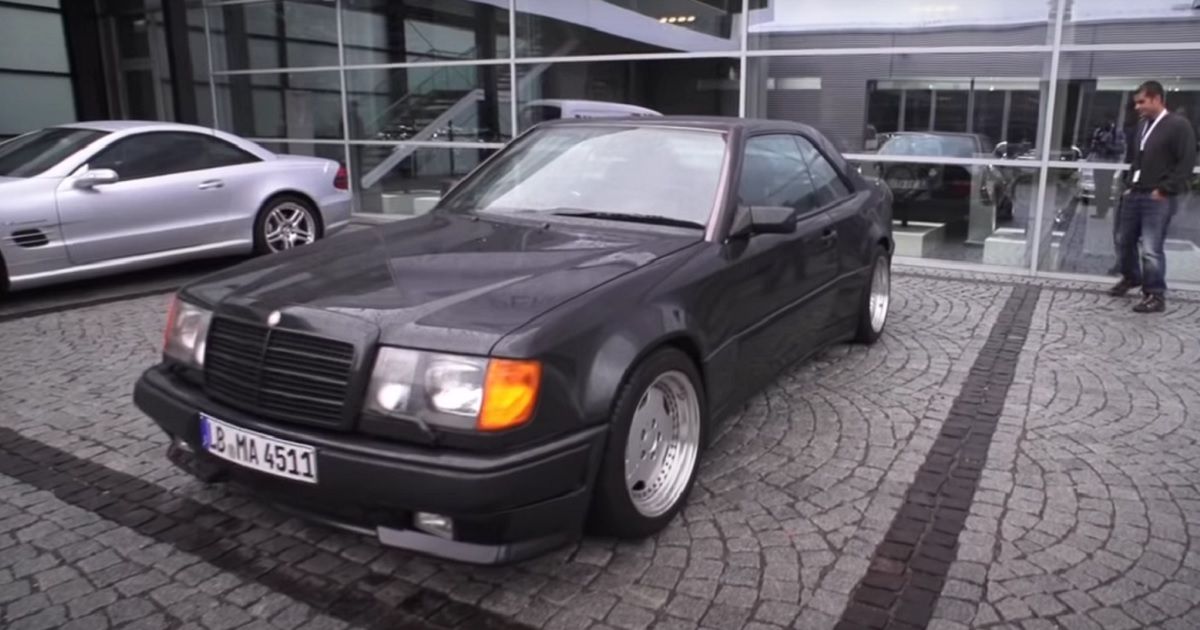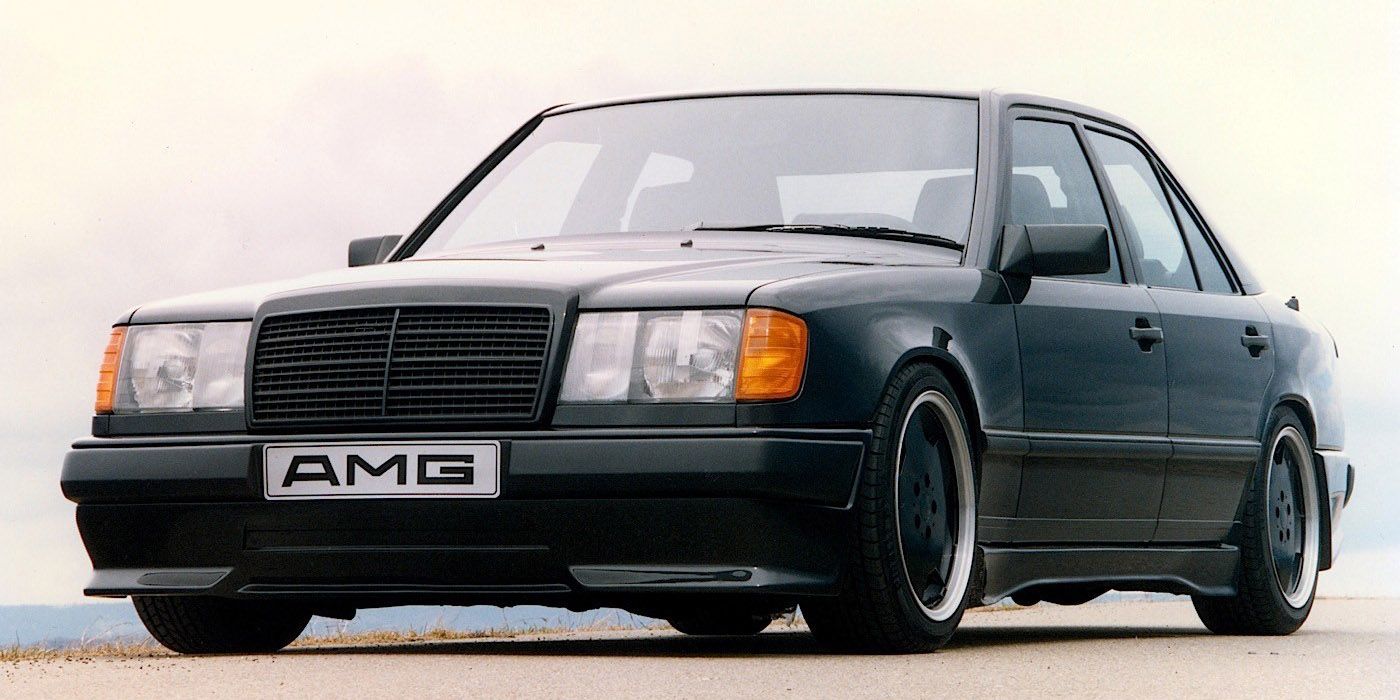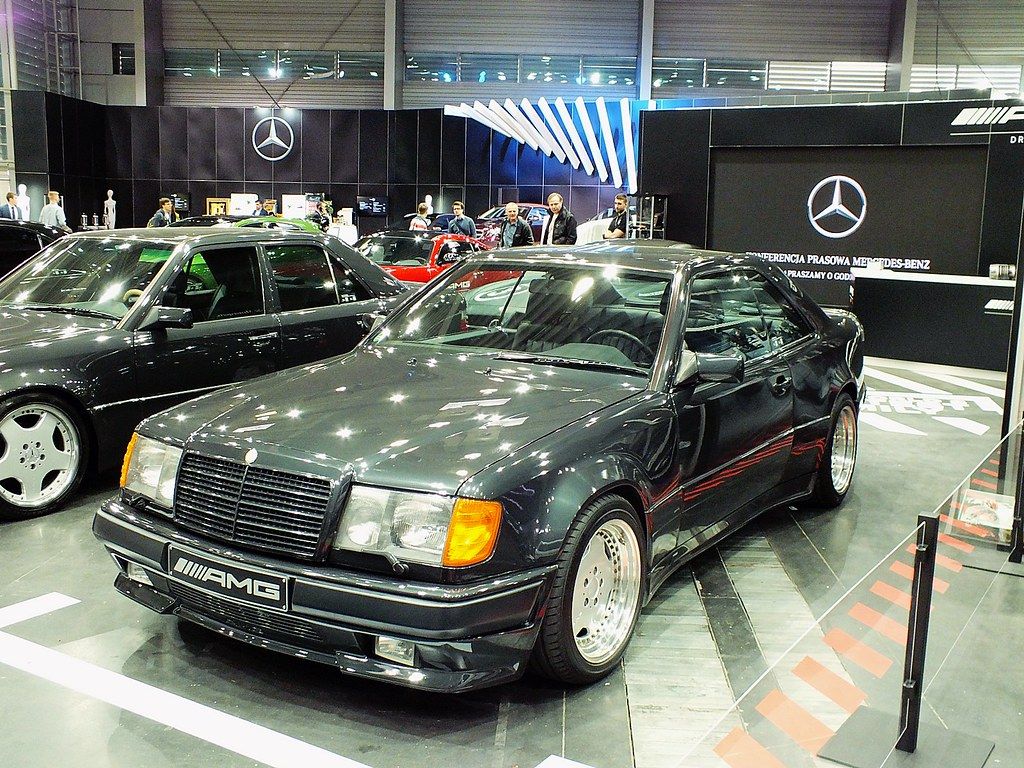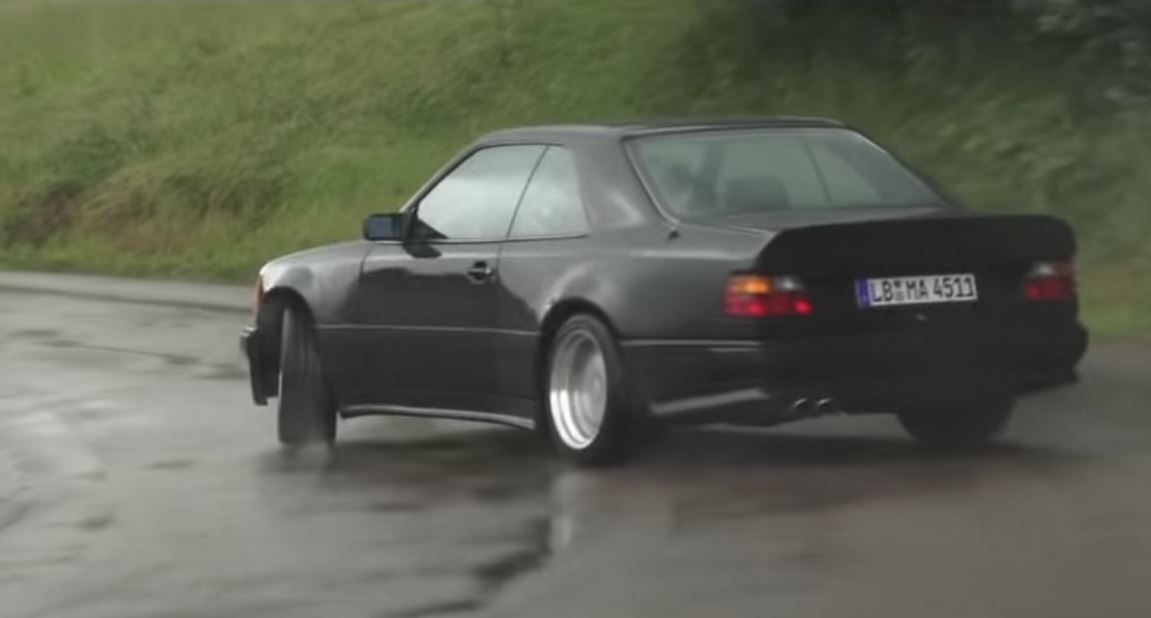AMG, like most things automotive, has an incredibly interesting history; they began as a small tuner of Mercedes luxurious vehicles from 1967 onwards, up until Daimler acquired the talented company in 1999.
Over recent years the insanity of their products has become slowly diluted, stepping away from monstrous V12s and V8s with forced induction towards more humble offerings like the A45 AMG with its 2.0-liter turbo four-cylinder engine. Before the merger, the two companies worked together frequently on the track to produce high-performing cars like the 300 SEL 6.8 and 190 E.
These rides, like much of the Mercedes line-up, are a rather overwhelming mess of numbers that sometimes represent displacement and, on other, occassions do not. But amidst this confusion, a few iconic named models rise; the CLR, SLS, and the iconic Hammer.
In 1986, AMG took the luxurious W124 E class in all its guises, be that Coupe, Estate, or Saloon, and turned a practical yet comfortable car like the E class into a near 400 hp lunatic.
It became the world's fastest sedan, demolishing the BMW M5, which in this segment was basically the only competition since this was long before Audi created the RS division.
The AMG Hammer Was A Response To The M5
AMG's objective was a simple one; fit the engine from the W126, the contemporary S-class, into the smaller E-class. They were successful, slipping the 360 hp 5.6-liter V8 into the engine bay; after a little modification, this became a 6.0-liter engine with 380 hp. A smaller car with more power has always been a recipe for success.
The most iconic coupe model weighed in at about 3,640 lbs, considerably lighter than many contemporary cars in this segment; for instance, the current RS6 vies for the same customers and weighs a mighty 4,960 lbs. This lightweight structure meant the Hammer achieved 60 in 5.1 seconds, although, allegedly these cars could do it in 4.4. With a limited-slip differential, the Hammer drove impressively when pushed, with plenty of tail-happy action.
The car also looked more distinctive than many of their previous models. The M5 had been launched in 1984, and now, with competition, the firm had to step up their game; as a result, they introduced a wider body, modest rear spoiler, flared wheel arches, and 17 inch Hammer wheels; these wheels feature a black and silver design, which is complemented by an ominous black front grille.
The design of the Hammer sounds incredibly similar to the performance variants of fast cars today; it started these trends, but each feature is more subtle than modern alternatives. With car design becoming increasingly complicated, more aggressive, and further away from classical dimensions, the Hammer is the genesis of these design motifs but did not stray from simplicity.
This Mercedes Was A Lamborghini Beater
The W124 did leave this AMG car with a few issues, however. Many critics fault this era of Mercedes-Benz gearboxes. The automatic four-speed gearbox has often been called a "slush-o-Matic," with slow response times and producing a frustrating experience when being pushed on a winding road.
As much as AMG tried by tuning the gearbox, they couldn't change the W124's true nature; it was designed to sit on the Autobahn. Supporting this idea is the fact that it was recorded as going faster from 60-120 mph than the Lamborghini Countach.
Topping out at around 190 mph means that the car has incredibly long gearing, and this makes the gearbox that little bit worse in terms of throttle response, which implies that the Hammer was meant to be driven fast but only occasionally. This is the same issue that plagues the W124 500E, Mercedes-Benz's fastest car to use the W124 design; Porsche assisted in engineering the suspension and, because of their dire financial situation, manufactured the chassis.
The 500E received the 5.0-liter V8 from the SL, and although a decent car isn't anywhere near as iconic as the Hammer, with a little over 300 hp, a normal body kit, and a top speed of 155 mph, they can be found used for around $60,000.
The AMG Hammer Was An Expensive Proposition
The Hammer cost $161,422 in the 1980s; by comparison, the equivalent AMG E-class of today, the E53 AMG Coupe, costs around $80,000. The Mercedes AMG Hammer was intended for those who wanted luxury; also, an M5 was just a little bit too common.
The cars are incredibly rare, with only 29 ever being made and only one being an estate. As a result, this gem is highly collectible. The regular W124 sold 2.5 million units in its eleven-year run. One car came up for sale at Sotheby's; it was expected to go for $200,000 at auction and eventually went for $207,000.
With prices staying so high and so few units being out on the roads, examples have been kept in good condition, and as a slice of AMG's history, have been tucked away into garages.




